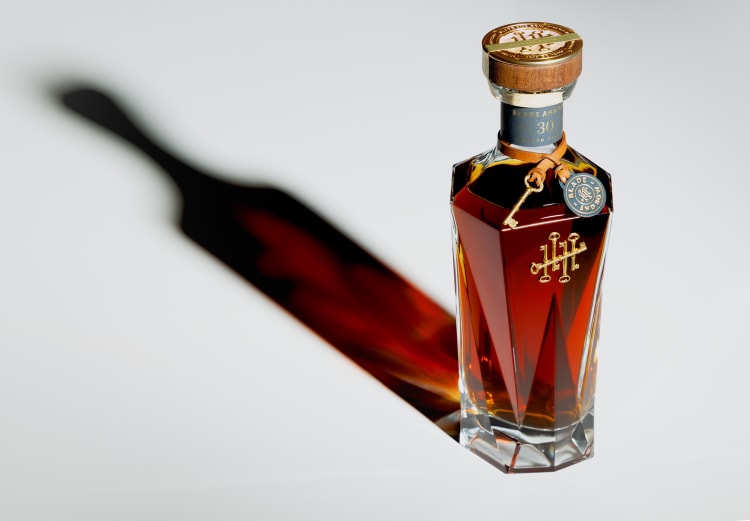For a lot of guys who’ve been around the block a few times, thirty years feels like a lifetime. It’s long enough to raise kids, build a career, maybe even retire and start wondering what comes next. So when a bourbon has sat in a barrel for three full decades, quietly doing its thing in the rickhouses at Stitzel-Weller, it’s fair to ask: did the wait pay off, or did the wood finally win?
Blade and Bow just gave us the answer with their new 30-Year-Old Kentucky Straight Bourbon, the oldest whiskey the brand has ever put its name on. Distilled back in the spring of 1993 and left alone until this year, it’s a bottle that carries real history in every drop.
Nicole Austin, the woman in charge of Diageo’s American whiskey program, went through barrel by barrel when these hit the thirty-year mark. She expected a lot of them to be tired, over-oaked, maybe even harsh after all that time pressed up against charred oak. Instead she found something rare.
“My vision for this 30-Year-Old project was to create a bourbon that captured decades of time, complexity, and nuance – something that would stand as a milestone in Blade and Bow's portfolio,” Austin said. “The expectation of a bourbon of this age is often that it will be over-oaked, harsh, or simple, but what I discovered was truly surprising – many barrels revealed incredible depth, rich vanilla, and layered fruit character.”
She ended up pulling liquid from just 42 barrels to make the final blend. That’s it. Forty-two barrels out of everything that started back in ’93.

Image credit: Blade and Bow
What came out is bottled at 54.5% ABV and left non-chill filtered. That means those little white flakes you might see floating in the bottle aren’t a mistake—they’re proof the whiskey still has all its natural oils and congeners. Real whiskey guys know that’s where the texture and flavor live.
Take a nose of it and you get bright lemon and fresh raspberry right up front, backed by ginger and cinnamon that feel warm rather than hot. Then deeper notes roll in—fig, burnt sugar, molasses. On the tongue it’s thick and oily the way a well-aged bourbon ought to be, with hazelnut, a touch of anise, even a little blackcurrant hiding in there. The finish cools off with something almost menthol-like, leaving both warmth and brightness behind.
Back before Diageo owned Stitzel-Weller, somebody smart made a call that saved this whiskey. As the barrels lost liquid to the angel’s share over the years, workers consolidated the remaining bourbon into fewer barrels so it stayed in full contact with the wood. Without that move, thirty years probably would have turned most of it bitter and tannic. Instead, Austin found barrel after barrel that still had life.
“The yield of very old whiskeys can be unpredictable – you expect a lot of over-oaked or one-dimensional barrels. But these were different,” she said. “So many of them still had this lovely vanilla and fruit character, real vibrancy, and surprising depth. I wanted to celebrate that.”
Stitzel-Weller itself is part of the story. Opened on Derby Day 1935, closed for a while, then brought back to life in 2014, it’s one of those places whiskey pilgrims put on the must-see list. Sitting just five miles from downtown Louisville, it’s an easy stop on the Bourbon Trail, and now it’s the only spot where you can sit down and order a pour of this 30-Year-Old for $225 at the Garden & Gun Club bar. They bring it out on a gold tray with good glassware and a few keepsakes—little touches that make the experience feel special.
If you’d rather take a bottle home, plan on around $1,200 for a 750ml, though prices can bounce depending on the store. It starts hitting shelves in select markets this month, November 2025, and it won’t last long.
For the guys who already have the regular Blade and Bow or the 22-Year-Old on the shelf, this 30-Year-Old is the next logical step. Same five keys the brand lives by—grain, yeast, fermentation, distillation, and aging—but taken as far as they’ve ever gone. It’s not just older; it’s proof that patience, when it’s paired with the right decisions along the way, can still surprise you after thirty years.
In a world that keeps trying to speed everything up, there’s something satisfying about a whiskey that took its sweet time and came out better for it. Pour a dram, lean back, and let three decades speak for themselves. You’ve earned the right to hear what they have to say.




